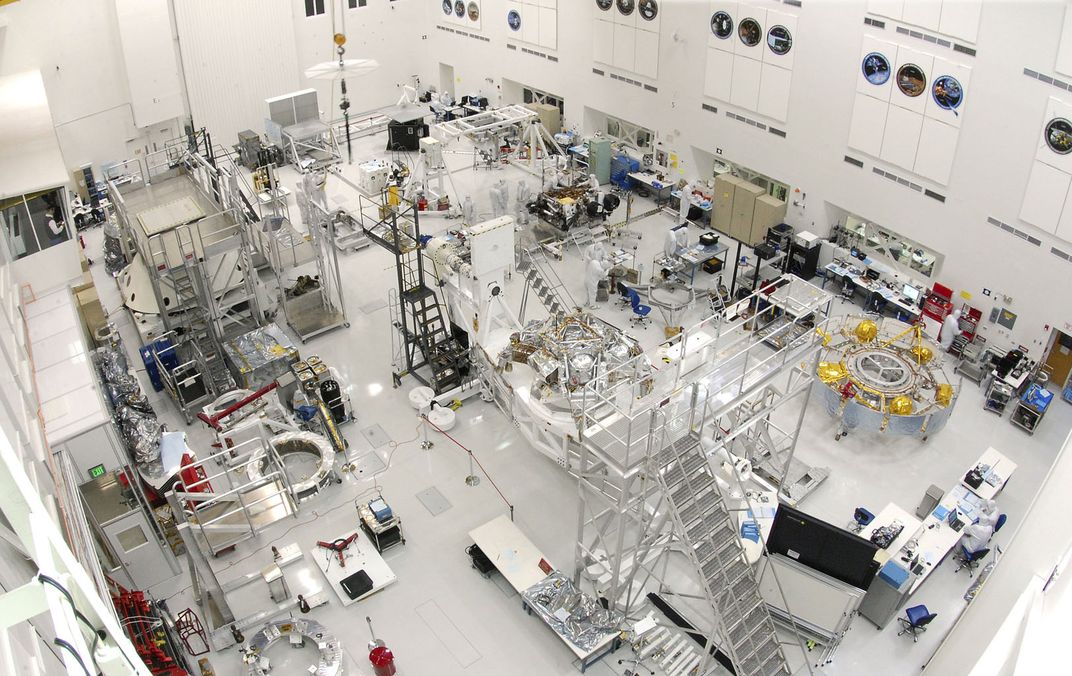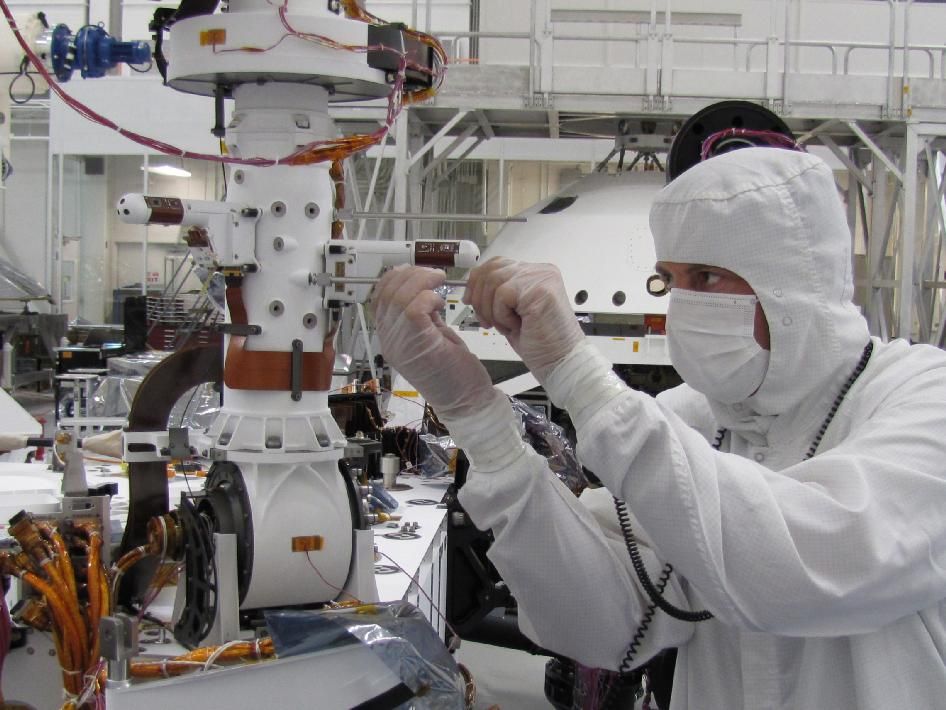Can We Save Mars From Ourselves?
When we travel to Earth-like worlds, contamination may be inevitable
/https://tf-cmsv2-smithsonianmag-media.s3.amazonaws.com/filer/96/0a/960a691d-9971-415e-ab6f-c4780becbcbe/mars-rover-curiosity-drill-hole.jpg)
Mars has been withstanding human invasion for decades. So far, we've successfully sent six spacecraft to land and take data from the surface and four rovers to drive around, with another orbiter and lander en route. In the next five years, at least three more rovers, two landers and two orbiters are in development with proposals for crewed missions and even permanent settlements not far behind. That’s a lot of interplanetary visitors.
With all that traffic, how do we protect Mars from being contaminated by Earth microbes—and vice versa?
It's a mission that's become increasingly challenging as private companies expand into space and the prospect of sending humans to Mars grows closer. Catharine Conley from NASA’s Office of Planetary Protection calls it “a Reese’s problem.” As she puts it: “I don’t want my peanut butter on your chocolate—and you don’t want your chocolate on my peanut butter!” Except in this case, the stakes are higher: We have no idea how devastating Earth microbes could be to Mars, or whether potential Martian life could damage Earth’s environment.
To get a handle on these unknowns, planetary protection researchers are turning to studies of invasive species on Earth, from the Zika virus to pythons in the Everglades. “Any of these would be prime examples that we need to really understand and evaluate our potential impacts on an ecosystem prior to introducing anything unknown into that environment,” says NASA planetary protection engineer James Benardini.
Some extraterrestrial environments, like meteors or gas planets, are unlikely to be able to support Earth life, meaning it’s less likely that contamination will be a problem. But on relatively Earth-like worlds like Mars, many regions are particularly prone to contamination.

We’re already taking precautions. All robotic spacecraft go through stringent cleaning processes to ensure that they don’t bring too many microbes with them. The spacecraft are built in clean rooms by workers in sterile “bunny suits” and surgical masks. Various parts are cleaned with solvents, bathed in hydrogen peroxide vapor and baked at different temperatures depending on what they’re made of and how likely they are to come into contact with the outside world. While robots can never be made completely sterile, these procedures mean they end up carrying tens or hundreds of thousands of microbes—instead of billions.
Despite these measures, we still don't consider the rovers we’ve sent so far to be sterile enough to be allowed into areas on Mars that might have water. If we introduce an invasion of Earth microbes that could thrive and multiply in those areas, we may never be able to tell if native life ever existed.
Then there’s people. People can’t be baked, and bathing them in solvents and peroxide is a bad idea. “Human beings are, roughly speaking, about 50 percent microbes by mass,” Rick Davis of NASA’s Science Mission Directorate said in a press conference. “We’re basically, if you will, big sacks of microbes. And so keeping that segregated from the Martian environment when humans get there is probably impossible.”
Instead, planetary protection officers hope that scientists can learn enough about Mars’ environment before we send humans there to either protect it—or stop worrying about contaminating it. “There’s still fundamental data that we would need before we start to evaluate whether or not it would be acceptable at any risk level to introduce an organism into that environment,” says Benardini. This would especially hold true for other worlds like Enceladus or Europa, on which Earth life could potentially thrive due to the presence of large amounts of liquid water.
Of course, it’s hard to know when we have “enough” information. We will never be 100 percent sure, for instance, that Mars does not have life. Even on Earth, scientists make unexpected discoveries about life all the time. For now, Davis says, “genetic technologies have come a long way, and frankly we haven’t found life on Mars. That doesn’t mean that it doesn’t exist there, it just might mean that we’re not asking the right questions.”
Human scientists on other worlds would be able to do more experiments than those permitted by the limited suite of instruments on a robotic explorer, but conversely, they could bring so much Earth contamination with them that they’d be blinded to any non-Earth life. It’s a dilemma to which planetary protection officers have yet to find an answer.

The field of planetary protection is constantly evolving with new information. The Committee on Space Research (COSPAR) holds a symposium every other year that brings thousands of space scientists together to discuss, among other things, how to keep other worlds as clean as necessary. COSPAR advises the United Nations, which can then incorporate recommendations into the 1967 Treaty on Principles Governing the Activities of States in the Exploration and Use of Outer Space, including the Moon and Other Celestial Bodies, providing a legal basis for planetary protection. So far 104 states have ratified the treaty, making them responsible for planetary protection both for their space agencies and for any corporations within their borders.
Humans may be notoriously bad at cooperating, but planetary protection efforts have been an exception. “To date, there has been a consensus that everyone will follow the same rules with the objective of conserving these things for future generations,” says Conley. That consensus is already an impressive feat: “From what I can tell, this is the first time in human history that humans as a global society made these kinds of decisions. And so far for the last 50 years we’ve managed to stick with them,” she says. “We’ve never succeeded in doing something like this before.”
The next 50 years will present unique challenges as more nations gaining spaceflight capabilities and private space exploration ventures like SpaceX, which recently announced plans to send the first private mission to Mars in 2018, continue to grow. Planetary protection requires a delicate balance of science, policy and mass consensus. In this growing sea of spacefarers, “it only takes one entity to decide that they’re going to be selfish, and if they do accidentally contaminate somewhere it could screw up the possibility of finding Mars life anywhere forever,” Conley says.
Planetary protection officers will keep fighting the odds to protect Mars and other worlds from humans and our microbes, because as Benardini puts it, it’s not just about protecting the science from contamination: “It’s about being good stewards of the world and the universe that we live in.”